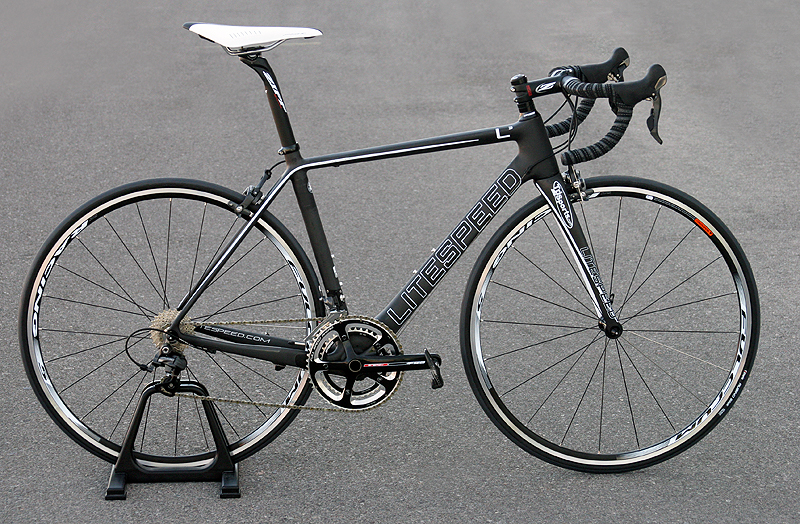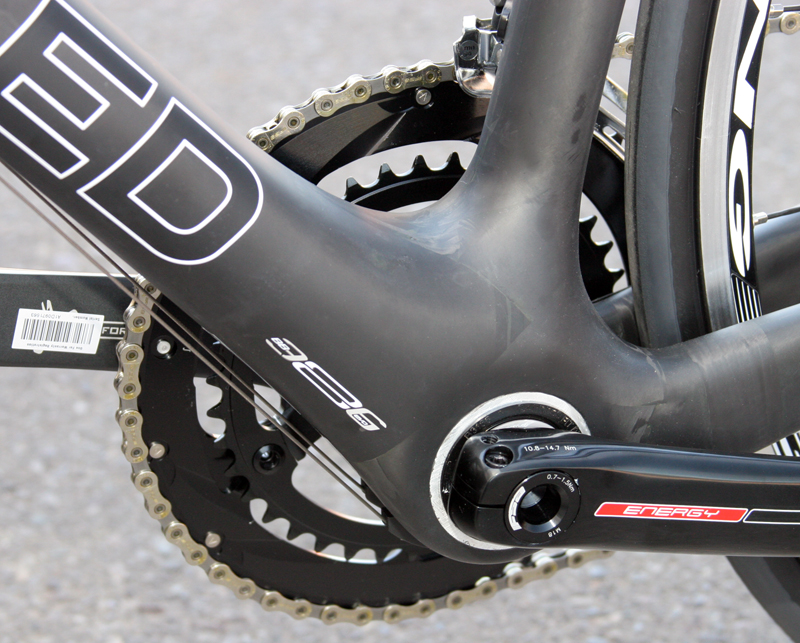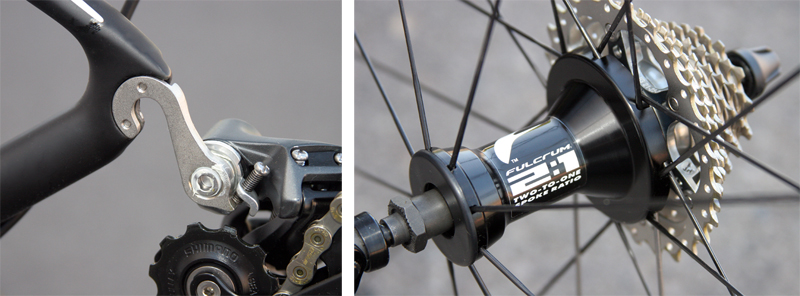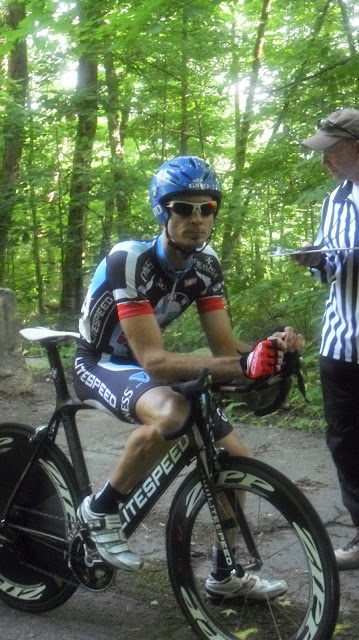
Litespeed's "L" Series combines ride quality and stiffness in a proven appraoch to carbon fiber road bike construction.
The differences between 60T carbon and 30T carbon aren’t a simple “good, better, best” progression. And while price seems to reinforce that, some customers report better ride characteristics from the less expensive 30T lay-up bikes than the pricier 60T bikes. Variables that will influence this decision are rider weight, road surface, rider preference for ride characteristics, etc.
What Litespeed has done, without a doubt, is successfully developed carbon fiber frame designs with forward thinking frame shapes that work well with different lay-ups. That the L3 rides much better than its $3499.95 price tag is testimony to that.

Litespeed
has divided their road bikes into two categories; the all-around "L"
Series road bikes such as L3 Ultegra and the aerodynamic "C" Series like
the C1R on the right.
The L3: Front to Back.
Litespeed started the component spec on the L3 with Zipp’s workman-like Service Course cockpit. The Service Course bar, named from a spin off of the term “Servizio Corse’” which Babylon.com translates from Italian to English as “Racing Service”. The anatomic bend bar is a 31.8 mm diameter “short-shallow” bend of heat-treated 7050 aluminum tipping the scales at a claimed 295 grams for a 44 cm width. In hand the bar feels fantastic; stiff, reassuring and still OK on bad roads. A wide center section means you can clamp aerobars on these with ease, but the flat finish means they will take a cosmetic beating from the aerobars being clamped on. The bars angle out slightly to the lower section wrist clearance in the drops.

Zipp's
alloy Service Course bar and stem are stiff, have a comfortable
anatomical bend and use stainless Torx fasteners. They also work with
clamp-on aerobars.
These bars steer a matching Zipp Service Corse stem from heat treated 7075 aluminum with a front-plate stem attached with four stainless steel Torx fasteners clamping with 4 Newton meters of torque. Good luck finding a more robust, dependable handlebar stem. The stem is available in 7 sizes in 1 cm increments from 70 mm to 130 mm and two rises, one a +/- 6 degree and the other a pretty typical +/-
17 degree. This all aluminum bar and stem combination is dependable, comfortable and economical.

The
fork on the L3 gives a nod to aero forks seen on sister company
Quintana Roo's bikes with the generous space between front wheel and
fork blade. The crown is massive and melds into the big 1.5" lower
headset race. This fork goes a long way to giving the bike its nice
ride.
The L3 uses a unique head tube with moderate height per frame size. This is worth knowing since some manufacturers, Cervelo as an example, have shifted to higher head tubes on road bikes. No road bike head tube height is optimal for all riders so Litespeed’s trend toward moderate to lower head tube heights contrasts with other brands’ trend to higher head tubes. A 54cm Cervelo R3 has a 148 mm high head tube while the Litespeed L3 has a 130 mm head tube in the 54cm frame size. That’s a difference of about 2 headset spacers. If you have a long torso and short legs this lower head tube geometry on the L3 may appeal to you. Litespeed uses a big 1.5″ diameter bearing on the bottom headset race that melds into the fork crown. The top race tapers down to 1.125″ diameter.

A slightly lower head tube per frame size and the big 1.5" lower headset race make for a racy front end on L3.
The single big story on L3 and all “L” series bikes is continuously variable tube shape. The shape of the frame sections changes as their requirement for lateral and vertical compliance changes. While this is a common theme in carbon fiber bike design Litespeed’s execution on the “L” series is unique and somewhat radical. You see this frame design most conspicuously in three areas; The change in shape of the down tube over its length, the asymmetrical orientation of the bottom bracket and the asymmetrical chain stays. Each of these designs were dictated by detailed FEA analysis to determine the optimal shape for the individual frame section.

The
complex, assymetrical multi-shape structure of the "L" series frames is
trickled down onto the L3 from the highest end "L" series frame. The
green line on the right photo provides a visual reference for the offset
orientation of the bottom bracket shell relative to the head tube.

The
BB386 bottom bracket configuration allows a wider, stiffer frame that
surrounds the bottom bracket. It also looks clean and integrated, a nice
touch.

There
is conventional external cable routing for rear brake and front
derailleur. The Zipp seatpost matches the bar and stem and holds a
proven Fizik Arione saddle.

A
conventional, dependable drivetrain with Ultegra and FSA components.
It's not cutting edge, but it will be serviceable for years to come.
Since we’ve made it to the back of the bike its worth mentioning the Fulcrum 2:1 rear hub configuration. This design doubles the spoke count on the portion of the hub that receives the most torsional stress making the wheel stiffer under heavy load. An added benefit is claimed to be the dispersal of drive forces more evenly over all spokes. We’ve had good luck with this wheelset and these hubs so the claims appear to have merit.

The
two-bolt rear derailleur hanger is durable and modular in case of a
catastrophic crash. The Fulcrum hub o the rear wheel uses Fulcrum's
special spoking pattern to distribute drive force over the entire hub
flange on each side.
If you’re a road bike customer in the mid-$3000 price range the “L” series bikes are worthy of research. If your fitter tells you that a mid to low head tube frame is best for your torso to leg length ratio (probably the majority of riders) then the L3 becomes an even more attractive candidate.





